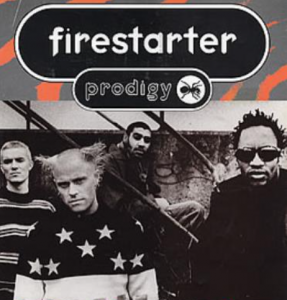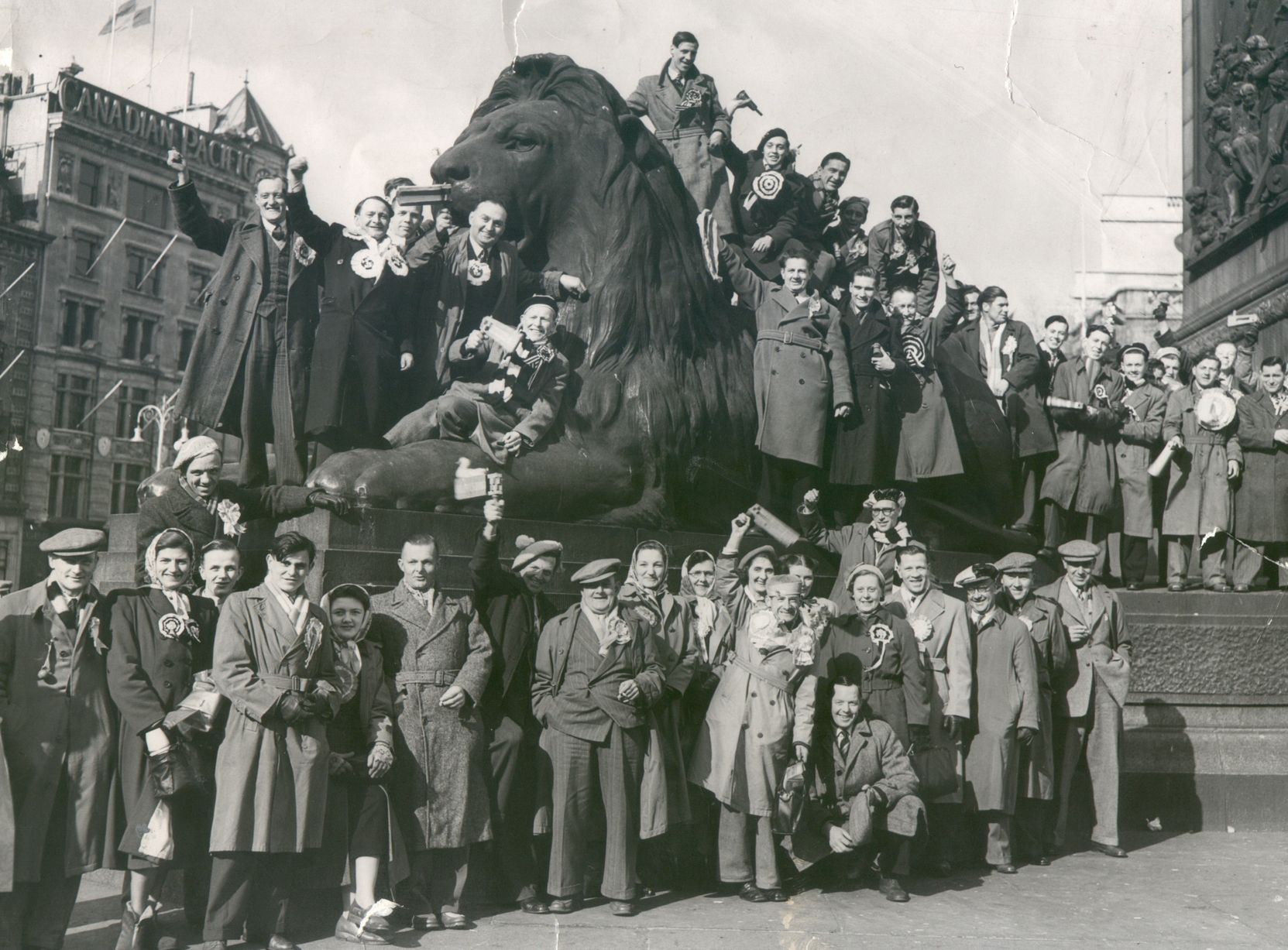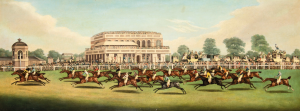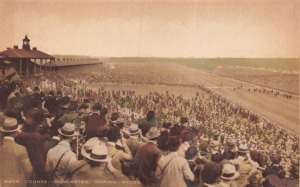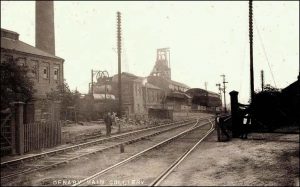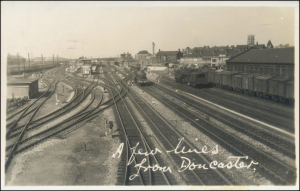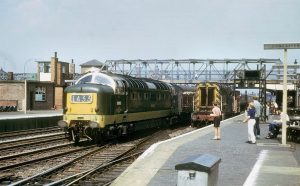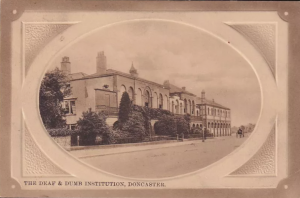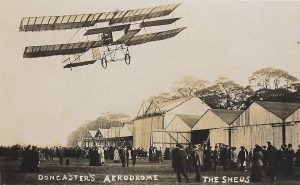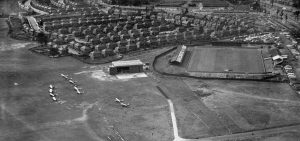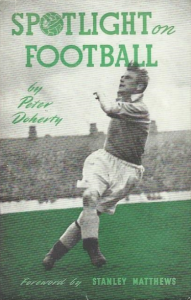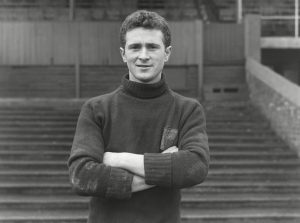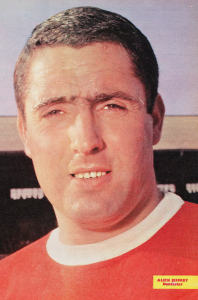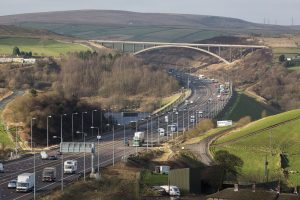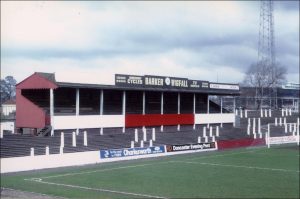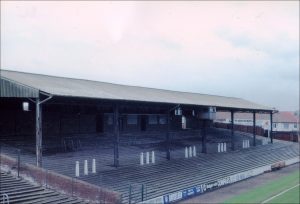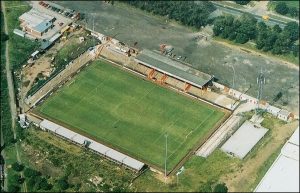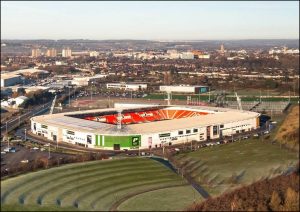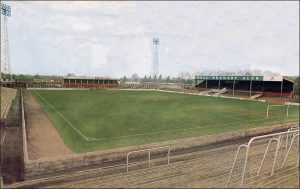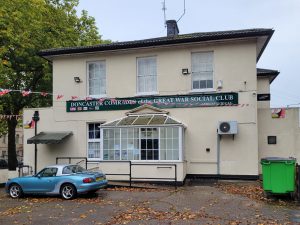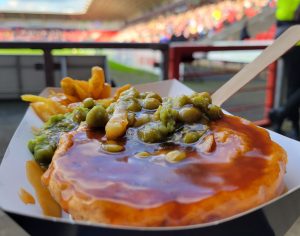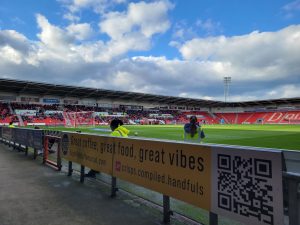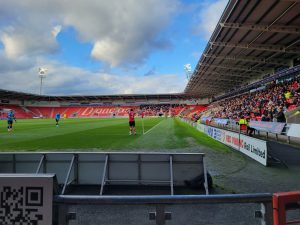Doncaster Rovers 1 Crewe Alexandra 1
League 2
Saturday 12 October 2024
The context
John and I last visited Doncaster back in 2012. Rovers beat Brentford 2-1; they would eventually finish as League 1 champions. This is always a good day out at one of the more characterful Sky-era grounds.
The history
Doncaster has been known for horse racing since Elizabethan times. Its very first circuit – laid out at Cantley Common – raised concerns about ruffianly conduct by spectators (some things never change). The Doncaster Gold Cup began in 1766, while Colonel Anthony St Leger put up his famous trophy ten years later. Today’s course is capable of accommodating 50,000 people.
“My grandfather was a miner and took me to the St Leger as a young boy,” author Tony Barber remembers in the Yorkshire Post. “It was the big miner’s race. You went to the St Leger as a pilgrim, a crusade. I remember being completely overwhelmed by the sheer spectacle – crowds, sideshows, escape artists in their Houdini suits. I was just a boy from a mining village in awe of his surroundings.”
The Don Valley’s mediaeval prosperity had derived mostly from small trades and weekly markets. But mining – which began at Denaby Main in 1856 – changed South Yorkshire beyond recognition. Doncaster station opened soon afterwards, with the Great North Railway’s locomotive plant and carriage works next door. Sheds large enough to service more than a hundred engines were built nearby.
During 1891 alone the Plant turned out one hundred locomotives, two hundred carriages and fifteen hundred wagons. Workshops eventually spread across two hundred acres, with five thousand men employed there at any given time. The Victorian station would later be renovated to incorporate an elegant Art-Deco entrance and nine refurbished platforms.
Local engineers soon adapted when diesel superseded steam. The powerful Deltic class was built here, while British Rail operations continued until 1983; this yard subsequently fared much better than many privatised British Rail facilities. Miles of track have now been lifted and a huge new housing estate covers the repair shop site. But Doncaster’s railway tradition has survived.
Works fitter Albert Jenkins formed Doncaster Rovers in 1879. They played for nearly thirty years – including short-lived Football League membership between 1901-03 and 1904-05 – at the Intake on Town Moor Avenue. This basic but tidy enclosure had initially been known as the Deaf & Dumb Ground, after a neighbouring charity school whose site is still occupied by Doncaster Deaf Trust.
The racecourse served as an Army depot during World War I. Rovers also found their home taken over, so leased some land off Bennetthorpe known locally as Belle Vue Gardens; this lay between present-day Danum Road and Sandbeck Road. When the club’s directors acquired another ground – adjoining Doncaster Aerodrome – they (rather confusingly) named it Belle Vue as well.
Royal Flying Corps fighter planes had been based here as local defence against Zeppelin raids. Commercial flights to Amsterdam then took over; one hangar survived until the 1970s, and was used for storing buses. Belle Vue – leased from Doncaster Council – occupied a wedge-shaped site behind St Anne’s Road. Racegoers and football fans shared its vast car park, while horses crossing Bawtry Road frequently halted passing traffic.
Rovers rejoined the Football League soon afterwards They would stay for seventy-five years. Belle Vue’s record crowd of just under 40,000 attended their game with Hull City in 1948; this was an era when personable tactician Peter Doherty – who also managed Northern Ireland – brought international players such as Eddie McMorran, Len Graham and Harry Gregg to the club.
Gregg joined Manchester United in 1957 and eventually made several hundred appearances for them. He showed tremendous courage at Munich twelve months later, pulling numerous survivors from the plane’s wreckage. Striker Alick Jeffrey – described by United’s assistant manager Jimmy Murphy as “the English Pele” – had also agreed terms with Matt Busby, but a bad leg break meant this transfer was never finalised.
Jeffrey regained fitness by training with Skegness Town. He tragically broke the same leg again on his debut, moved to Australia, came back, played another six seasons for Doncaster – scoring ninety-five goals – and was the League’s top scorer in 1964-65. Fourth Division crowds eagerly lapped up the two-footed shooting, powerful headers and instinctive positional sense that had once made him English football’s brightest prospect.
The journey
Doncaster is the kind of place you usually bypass. It felt odd to stop there today rather than carrying on towards Lincolnshire or Humberside. We were travelling separately; I drove east through Leeds, crossing autumnal Pennine scenery before picking up the Great North Road’s approximate midpoint – two hundred-odd miles from both London and Edinburgh – at Ferrybridge.
The ground
Belle Vue could never rival the nearby racecourse’s handsome Victorian enclosures. There were only basic cinder terraces and a few hundred seats, but Rovers huge new pitch – built on tons of discarded ash – played and drained magnificently. Fans trundled Bennetthorpe’s wooden stand along Bawtry Road on rollers; this quaint structure would perch proudly behind one goal for sixty years.
The ground was at its best immediately after World War II. Few subsequent improvements took place, and capacity gradually fell below 25,000. This highly aspirational figure declined still further because of post-Bradford safety work; mining subsidence beneath the Popular Side then meant Belle Vue’s biggest terraced bank had to be drastically reduced in size. By 1987 just 4,800 spectators could be admitted.
Further indignities soon followed. Ken Richardson’s disastrous spell as owner left Rovers playing non-League football, while one of his more outrageous stunts – for which he did time – saw their stand burned down in a failed attempt to claim the insurance money. New directors oversaw promotion and patched up Belle Vue; moving grounds, however, seemed the only viable option.
Lakeside Sports Complex bucked a trend. Unlike virtually every other contemporary stadium development this one was neither built out of town nor situated on reclaimed land. Rovers share it with a multi-pool water park, ice skating rink, sports hall, gym, fitness studios, squash courts, social facilities and assorted retail outlets. The first League game – against Millwall – took place on 11 August 2007.
At first glance this looks like just another concrete bowl lined with plastic seats. It lacks Belle Vue’s uncluttered individuality. But serious thought has gone into design here; tasteful seat art, spacious undercroft areas and floodlight pylons like desk lamps all single Doncaster out as subtly different. Modest crowds such as today’s can still kick up plenty of noise, an advantage that no doubt contributed to Rovers’ recently-set record of eleven straight home wins.
Flesh and wine
I met John by Elmfield Park just off Bennetthorpe. A nearby social club offered draught Magnet and plentiful seating; twenty brisk minutes’ walk through quiet streets then brought us to the ground. Despite occasional wrong turns – and our schoolboy error of following some people wearing Doncaster shirts to their house – we arrived just before kick off.
Food at professional football seems to be getting better. And by that grudging admission I mean you can now very often – in the lower leagues at least – find substantial, straightforward refreshments for a reasonable price. Doncaster’s concourse bars had pie, peas, chips and gravy keeping warm in stainless steel containers; even more remarkably, there was still plenty left.
The game
Crewe shaded a tight contest when these teams met in last season’s play-off semi-final. There were early signs that today would be equally close-fought. Everyone battled away, but only a disallowed Billy Sharp toe-poke from Jordan Gibson’s delicate free-kick – awarded after Mickey Demetriou felled Harry Clifton just outside the box – came close to separating them.
Things gradually became more open. Crewe took a second-half lead through Max Conway, who slalomed with youthful impetuousness around three Doncaster defenders before shooting crisply past Teddy Sharman-Lowe. Another quality effort produced Rovers’ equaliser; Kyle Hurst’s confident finish ended five slick box-to-box passes, and they finished strongly as the last ten minutes played out in torrential rain.
Teams and goals
Doncaster: Sharman-Lowe, Fleming (Ironside 62), McGrath, Oluwu, Sterry (Sbarra 62), Bailey, Broadbent, Gibson, Clifton (Hurst 70), Molyneus, Sharp. Unused subs: Close, Lawlor, Yeboah, Senior.
Crewe: Marschall, Williams, Demetriou, Connolly, Conway, Rooney, Tabiner, Sanders (Thibaut 69), Breckin (Billington 81), Tracey, Holicek (Lunt 69). Unused subs: Agius, Booth, Finney, Roberts.
Goals: Doncaster: Hurst 73. Crewe: Conway 56.
Attendance 7472.
